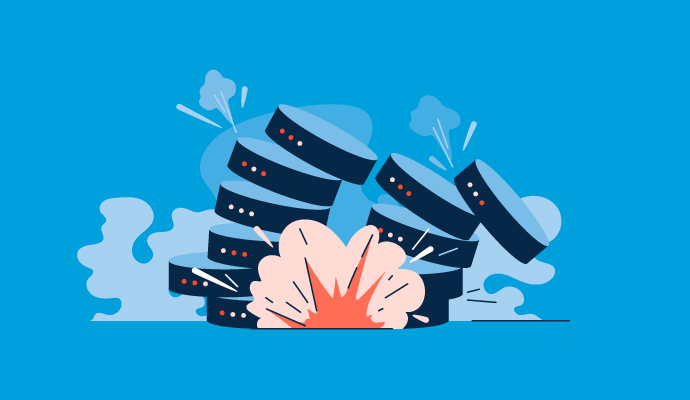Understanding the Role of Data Destruction in Strengthening Cyber Security Defenses
Understanding the Role of Data Destruction in Strengthening Cyber Security Defenses
Blog Article
The Significance of Effective Data Devastation Practices in Shielding Sensitive Information and Ensuring Computer Safety And Security
In an age where information breaches are progressively typical, the relevance of effective data destruction practices can not be overstated. Executing durable data devastation methods not only reduces these threats but likewise straightens with lawful conformity requirements, making certain that organizations promote their reputation and foster customer trust.
Recognizing Information Damage
Comprehending information damage is important in today's electronic landscape, where delicate info can conveniently be jeopardized. Efficient information damage entails not merely removing files however ensuring that information is irretrievable through detailed approaches. This process is essential for organizations that take care of personal customer information, copyright, or inner files, as any type of violation can result in serious monetary and reputational consequences.
Data destruction includes different strategies, consisting of shredding physical media, degaussing magnetic storage space tools, and using software-based remedies that overwrite data multiple times. Each method serves a certain objective and has to align with the level of sensitivity of the details being taken care of. Physical devastation is frequently chosen for difficult drives including highly personal information, while software application methods could be sufficient for much less sensitive details.
Additionally, adhering to sector standards and laws, such as the General Information Protection Regulation (GDPR) or the Medical Insurance Transportability and Liability Act (HIPAA), is vital for compliance and to reduce legal threats. Organizations has to establish a robust information devastation policy, train employees on finest techniques, and on a regular basis examine their procedures to ensure that all delicate information is thrown away securely and successfully.
Risks of Inadequate Practices
Poor information devastation practices expose organizations to considerable threats that can have far-reaching repercussions. When sensitive info is not effectively taken care of, it remains at risk to unauthorized accessibility, which can result in data violations and identity theft. Such cases not just jeopardize the safety of people yet additionally tarnish the organization's credibility, leading to a loss of client depend on and possible monetary effects.
Moreover, governing compliance is increasingly strict in numerous industries. Failing to follow information damage laws can result in hefty fines and legal actions against companies. These penalties can divert and stress financial resources interest from core organization operations.
On top of that, the misuse of recurring information can bring about copyright theft or business reconnaissance, threatening competitive advantages (data destruction). The effect of poor information destruction prolongs past immediate monetary losses; it can also lead to lasting damages to brand name stability and market setting

Organizations have to identify that information safety and security is not exclusively regarding stopping violations; it also includes the accountable administration of data throughout its lifecycle. Ignoring efficient data destruction protocols can have tragic effects, emphasizing the need for durable steps to reduce these risks.
Best Practices for Information Damage
Executing effective data devastation methods is vital for guarding delicate info and maintaining compliance with regulatory criteria. Organizations must embrace a multi-faceted method to ensure that information is irretrievable, consequently stopping unauthorized accessibility and prospective breaches.
First, information must be categorized based on level of sensitivity, enabling companies to use suitable devastation techniques tailored to the degree of risk. For digital data, making use of software-based data-wiping tools that follow market standards can effectively overwrite existing information. Physical destruction approaches, such as shredding or degaussing, are vital for devices that save delicate information, making certain total obliteration.
Establishing a clear information retention plan is important, describing how much time different sorts of information should be kept before devastation. Regular audits of information storage space systems are likewise essential to identify out-of-date or unneeded information requiring removal.
In addition, training employees on the relevance of data damage and the certain protocols to follow fosters a culture of protection within the organization. Lastly, maintaining documentation of data devastation refines provides responsibility and sustains conformity with interior plans and external guidelines. By sticking to these best practices, organizations can substantially minimize the threats connected with information click here now direct exposure.
Legal and Compliance Considerations

Failure to follow these guidelines can lead to extreme penalties, consisting of substantial penalties and reputational damage. Organizations must apply a robust information destruction policy that straightens with these legal structures and offers clear standards on the proper approaches of data disposal, whether physical shredding or digital cleaning.
Moreover, preserving documentation of information destruction activities is essential for demonstrating conformity during audits or evaluations. By focusing on lawful and compliance considerations, companies can boost their data safety stance and foster trust with customers and stakeholders, eventually adding to a more secure data management setting.
Benefits of Effective Data Destruction
Reliable data damage methods prolong beyond mere compliance; they offer significant benefits to companies that prioritize them. By making certain that delicate info is irretrievably ruined, organizations reduce the risk of information violations and the prospective monetary repercussions associated with them. This proactive approach not just safeguards versus unapproved gain access to however likewise improves the general dependability of the organization in the eyes of stakeholders and clients.
Implementing robust data devastation approaches, such as physical damage of storage gadgets or sophisticated information wiping methods, adds to the conditioning of a company's cybersecurity position. data destruction. It minimizes the chance of intellectual building theft and secures proprietary information, thereby keeping an affordable edge on the market

Verdict
In final thought, efficient information devastation methods are necessary for protecting delicate details and improving general computer protection. By executing thorough methods such as degaussing, shredding, and software overwriting, companies can minimize the threats related to unapproved accessibility and information violations. Adherence to governing criteria, consisting of GDPR and HIPAA, additional strengthens compliance and safeguards against legal repercussions. Ultimately, a dedication to durable data damage techniques promotes a culture of responsibility, therefore reinforcing why not try this out a company's cybersecurity pose and maintaining client trust fund.

Report this page